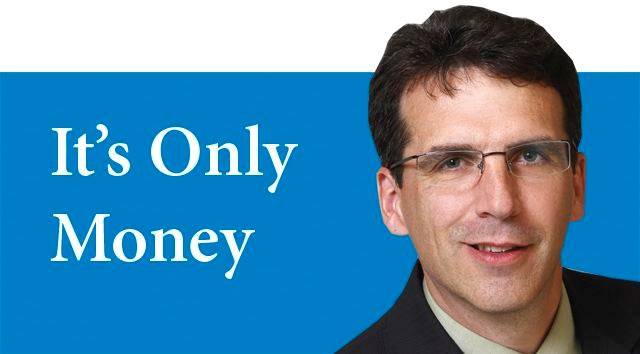I recall in 1972 the election of B.C.'s first NDP government. My friend's mom had voted for the new government against the wishes of her husband. That was a thing then - discussed openly. She chose to vote against his persuasions. Today I honestly can't imagine a man who would think he could tell his wife how to vote, but in those days it happened.
The update to the 2017 provincial budget, originally crafted by the previous Liberal government offered a first glimpse at the shift in direction that the eight-week old NDP government promises to deliver with the support of the Green Party. In this respect, this update packs more than a regular mid-year review. Largely borrowed from our colleagues at RBC Economics, this article outlines the key changes being launched.
A new approach
The new government ditches the tax neutrality of the provincial carbon tax. Going forward, future increases in the carbon tax - starting with a new $5 per tonne rise schedule for April 1, 2018 - will no longer need to be matched by an equal-sized tax cut somewhere else.
Modest change, reflective of thin minority rule
Other than a few marquis measures, the budget 2017 update didn't represent a significant change in fiscal philosophy from the previous administration, but hints at things to come by its tone and direction. The plan projects small surpluses of $246 million in FY17/18, $228 million in FY18/19 and $257 million in FY19/20, not far off from the previous administration's forecasts.
Inheriting good shape
British Columbia's strong economy has provided a backdrop to allow modest spending increases, and like the kid who found change in his laundry, the new government is spending. The forecast for real GDP growth in 2017 has been revised upwardly from 2.1% in the February budget to 2.9%.
Spending it
With this fiscal room at hand, BC Finance Minister Carole James announced a series of spending initiatives which put the NDP stamp on provincial finances, allocating $660 million in FY17/18--rising to $900 million in FY19/20. Chief among these were the elimination of bridge tolls ($224 million in FY17/18), increasing funding for education ($177 million), boosting social assistance rates ($104 million), more money to address the fentanyl crisis ($67 million) and increasing investment in housing ($14 million). These initiatives were on top of previously announced $669 million to support wildfire emergency response this year.
Taxes rise for some, cut for others
Minister James announced a mix of tax increases and cuts that initially brings in little net new revenue this year ($50 million). The net increase grows materially over time, however, to $480 million by FY19/20. The new government is reinstating a higher personal income tax rate (16.8 per cent) for those with taxable income exceeding $150,000 and raising the general corporate income tax rate from 11 per cent to 12 per cent. On the other hand, the government is lowering the small business tax rate from 2.5 per cent to two per cent and upholding the previous government's pledge to cut Medical Services Plan premiums by 50 per cent. Minister James indicated that her government is still committed to eliminate these premiums completely, although a decision in this respect has been delayed to a future budget.
The province's capital plan gets a further boost
The new NDP government ramps up projected capital spending by a further $930 million to $14.6 billion. This includes a record $5 billion this fiscal year. The B.C. Transportation Financing Authority (up $346 million), health (up $214 million), education (up $266 million) and housing (up $119 million) are getting the lion's share of the $1.3 billion increase relative to FY16/17. The three-year capital investment plan for self-supported entities (commercial crown corporations) is revised downwardly by $2.3 billion relative to the February budget to $8.5 billion. The revision reflects the cancellation of the George Massey Tunnel by the Transportation Investment Corporation. BC Hydro's $8.8 billion Site C clean energy project is still a go so far.
Provincial debt rises
The deterioration is due in part to a one-time $3.5 billion reclassification from self-supported debt to taxpayer-support debt related to the government's decision to cancel tolls on the Port Mann bridge. It also partly reflects stronger expected capital investment throughout the fiscal plan. Total provincial debt is now forecasted to rise from $65.9 billion at the end of FY16/17 to $72.8 billion by FY19/20.
Borrowing requirements jump this year
In total, the B.C. government will borrow $5.4 billion in FY17/18, a sizable increase of $1.9 billion over FY16/17. It expects borrowing requirements to climb higher still to $7.2 billion in FY18/19 and $7.4 billion in FY19/20.
More to come in 2018?
The measures announced in this budget update should be seen as the NDP government's first steps toward putting their stamp on the province after 16 years of Liberal administrations. A number of key (and expensive) electoral commitments--including $10 a day daycare and complete elimination of Medical Services Plan premiums--have not been fulfilled this time around but remain on the government's to-do list. The upcoming 2018 budget no doubt tell us more about the next steps. For now, the first steps stayed within the province's means. Hopefully this will remain a guiding principle.
Mark Ryan is an Investment Advisor with RBC Dominion Securities Inc. (Member-CIPF), and these are Mark's views, and not those of RBC Dominion Securities. This article is for information purposes only. Please consult with a professional advisor before taking any action based on information in this article. Mark can be reached at mark.ryan@rbc.com.



